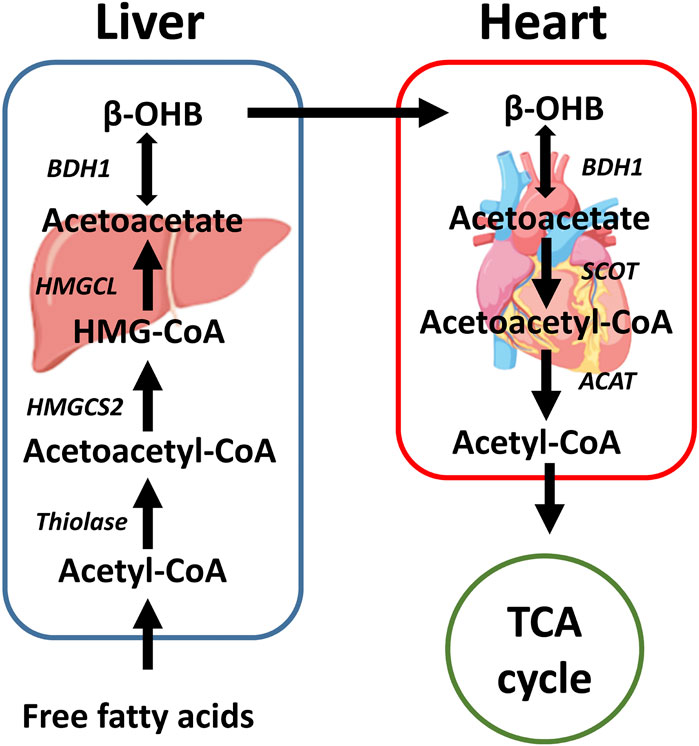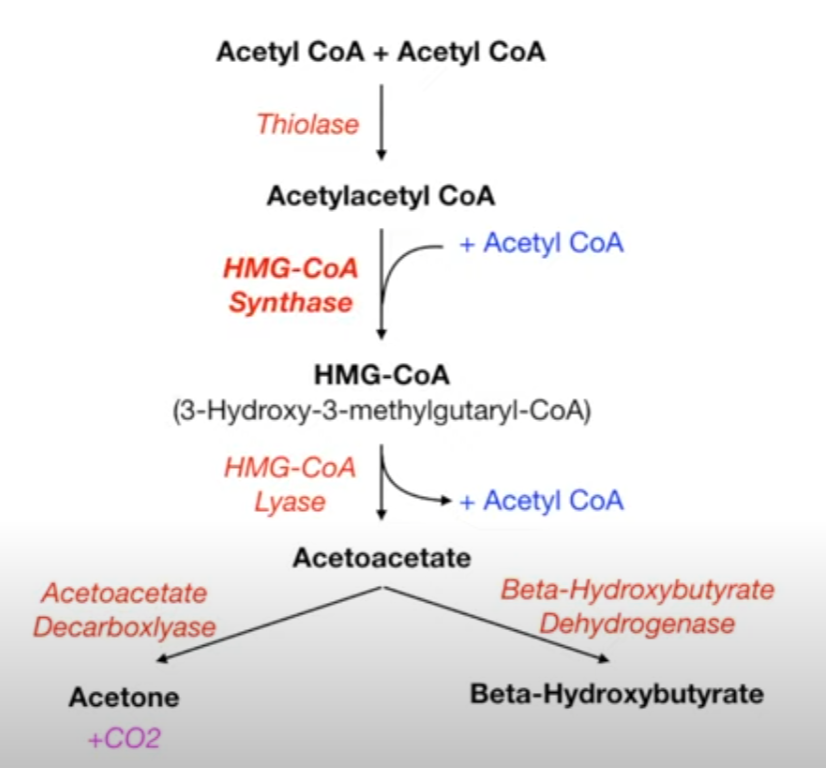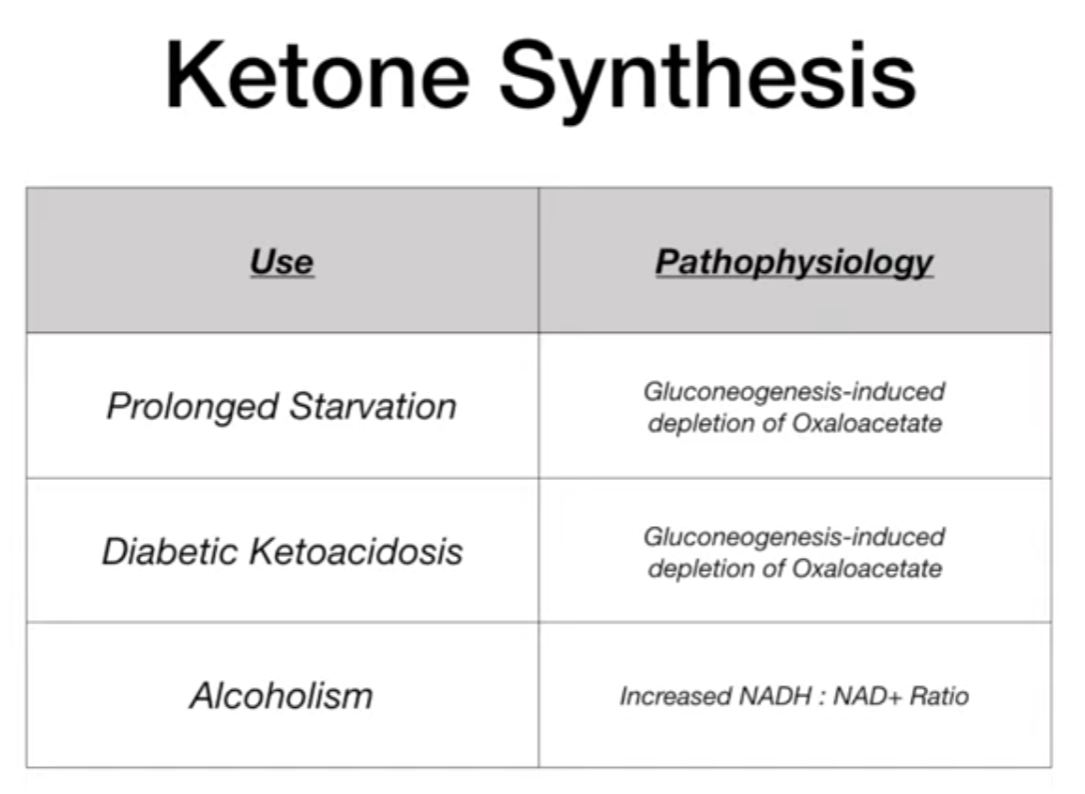
- Ketone bodies
- Water-soluble molecules that are produced by the liver and used by peripheral tissues (e.g., heart, brain, skeletal muscle) as an energy source when glucose is not readily available (e.g., during prolonged starvation, in diabetic ketoacidosis, or chronic heavy drinking)
- Three ketone bodies: acetoacetate, β-hydroxybutyrate, and acetone (acetone is a breakdown product of acetoacetate and β-hydroxybutyrate; has a fruity smell)
- The ratio of BHB to AcAc can indicate metabolic state (e.g., 1:1 normally, up to 10:1 in DKA).
- The prefix “acet-” is commonly associated with acetic acid and its derivatives, from which acetone is derived.
Ketogenesis
- Sources
| Source | Fates | Notes |
|---|---|---|
| Fatty acids | β-oxidation → Acetyl-CoA → Ketogenesis | Primary source |
| Ketogenic amino acids (leucine and lysine) | Catabolism → Acetyl-CoA/acetoacetate → Ketogenesis | More contribution in advanced starvation |
 Rate-determining enzymes
Rate-determining enzymes

Tip
Liver is only used for synthesizing ketone bodies, not using them. Ketone bodies are then transported to other organs via bloodstream.
- Liver cells lack β ketoacyl-CoA transferase → cannot use ketone bodies as fuel.
- Regulation:
- In prolonged fasting and diabetic ketoacidosis
- Oxaloacetate is depleted for gluconeogenesis.
- This results in a buildup of acetyl-CoA molecules → shunts the pathway toward the production of ketone bodies.
- In alcoholism
- Excess NADH shunts oxaloacetate to malate.
- This results in a buildup of acetyl-CoA molecules → shunts the pathway toward the production of ketone bodies.
- In prolonged fasting and diabetic ketoacidosis